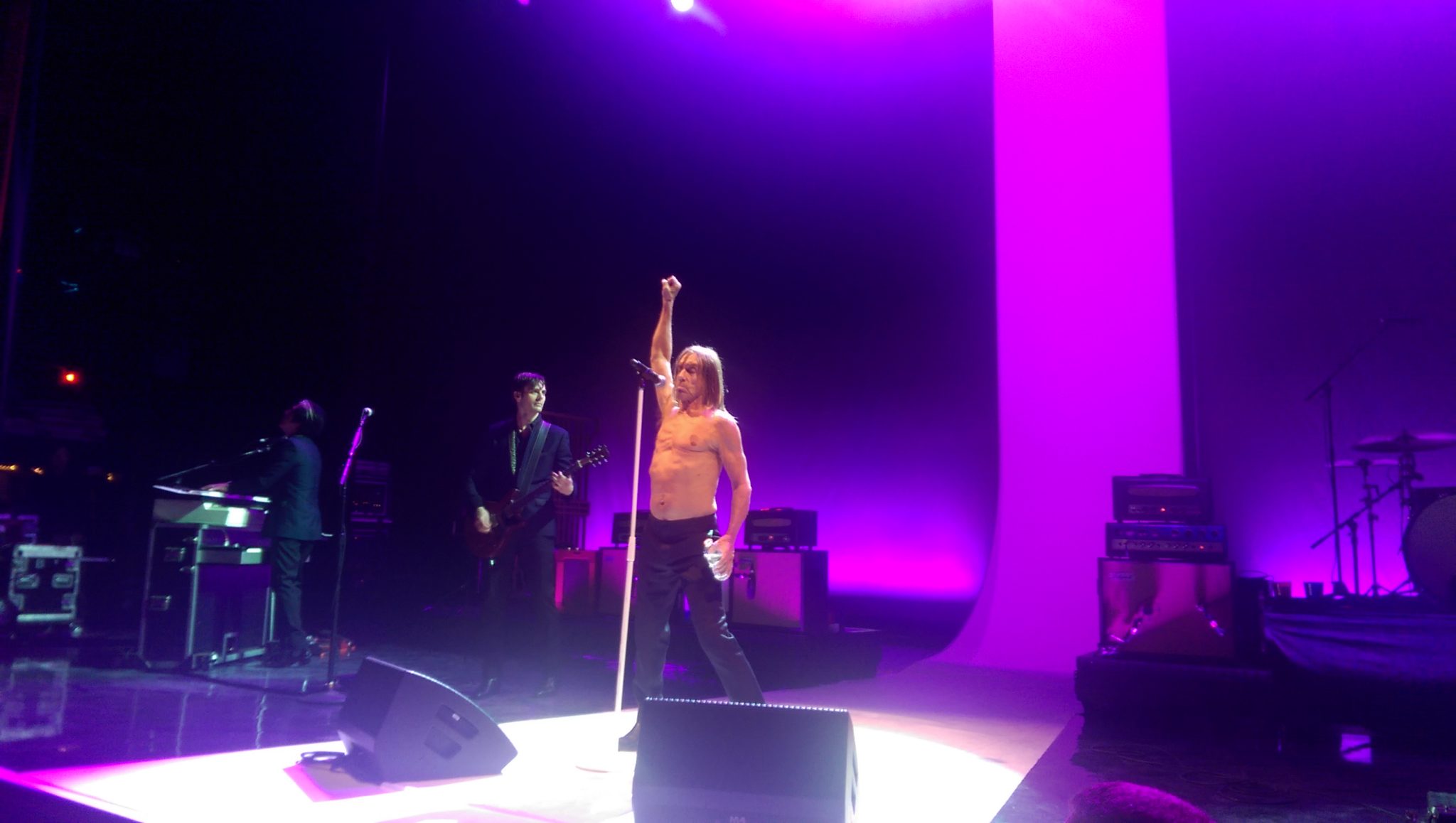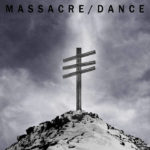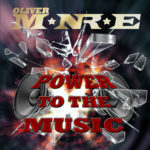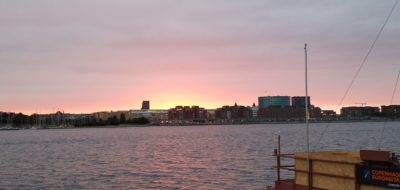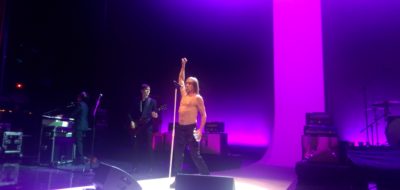I’ve been writing the opening of this piece in my head for weeks — starting, stopping, undoing, restarting, stopping again, and so on — ever since my ticket was confirmed.
I couldn’t make up my mind. Nothing seemed adequate, yet at the same time it all felt way, way over the top. The dichotomy plagued me and, try though I might, I just couldn’t seem to find the right words. Even on the Metro North train from Grand Central to Port Chester on the way to the Capitol Theatre on April 14, I had no idea what to write.
After all, how do you introduce a legend? How do you introduce whom many consider to be the Godfather of Punk?
How do you introduce Iggy Pop?
Noveller Kills as Opener
Luckily for me, I’ve got something to delay the inevitable. Someone, rather.
Supporting Iggy Pop on his Post Pop Depression Tour is the stunningly talented and well-worthy opening act Noveller (pronounced like “novella,” except with an “er” on the end instead of an “a”). Noveller is the highly productive solo project of Brooklyn-based Sarah Lipstate — just her and an electric guitar. And an effects board roughly as big as her body.
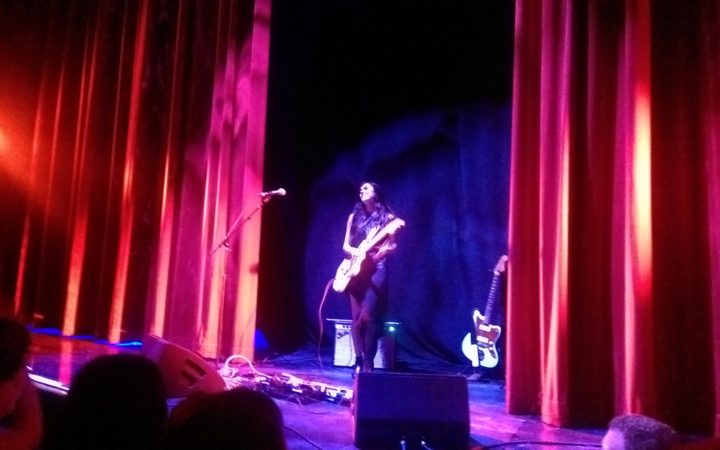
But the sounds she could make with just those three things! I wouldn’t believe they all came from a single person playing a single instrument unless I had seen it with my own two eyes.
Deftly applying effects and layering, playing with her feet as much as her hands, Noveller created incredibly lush soundscapes. Rhythmic and fluid seas of sound that made me feel how I imagine one does right before drowning, a kind of overwhelming sensation of peace. The songs, all from her newest album Fantastic Planet, in many ways reminded me of the work of Philip Glass, particularly his score of the Qatsi trilogy.
Noveller played a short but thoroughly absorbing set, swaying as though hypnotized by that sea of sound, before the curtains closed in preparation for the main attraction.
Iggy Pop!
After a surprisingly short setup, the curtains opened once more without much warning.
And there they were — Pop himself and his Post Pop Depression band, dressed to the nines in all-black tuxes (the bands’ with leopard print accents) on the white-light saturated stage. The whole effect had a rather surreal feel to it and was deeply reminiscent of a late ‘40s variety show.
They launched immediately into the infectiously bouncy “Lust for Life,” the titular track of Pop’s second solo album and second David Bowie collaboration. From there the crew jumped straight to “Sister Midnight,” the deeply Frank Zappa-esque opener from The Idiot, Pop’s first solo and collaboration with Bowie.
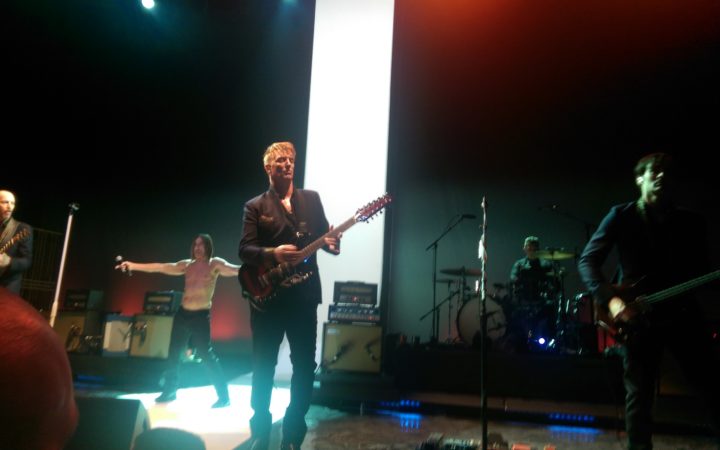
Pop was in his trademark bare torso by the start of “American Valhalla,” which he introduced as the result of his asking the types of questions a man of his age asks.
This third song comes from his latest release, Post Pop Depression, far and away his most commercially successful album in over 40 years of recording. In fact, for the next two hours Iggy and the gang played nothing but cuts from those three albums — The Idiot, Lust for Life, his first as a solo act, Post Pop Depression, which he has heavily implied could be his last.
The combination is fitting. The influence of Josh Homme, prodigious Queens of the Stone Age front man and Post Pop Depression cowriter/producer, is plainly heard. Particularly in his signature guitar tone, even if its dialed back a bit here.
At the same time, the Bowie influence from The Idiot and Lust for Life albums — that avant garde sound that’s as much funk and “robotic” electronic as it is rock — is clear as well. Not only in sound, either, but in spirit — Iggy Pop is exploring himself and his place in a rapidly changing world in Post Pop Depression as thoroughly has he was doing it with Bowie in Berlin in the late ‘70s.
It makes sense, then, that Iggy Pop would pick these three albums, out of 20, to play together on what may very well be his last go-around.
Iggy Pop Builds Stellar Line Up
Iggy Pop may have been a Stooge, but he’s no dummy. He knows talent when he sees (hears?) it, and he surrounded himself with it for this album and tour.
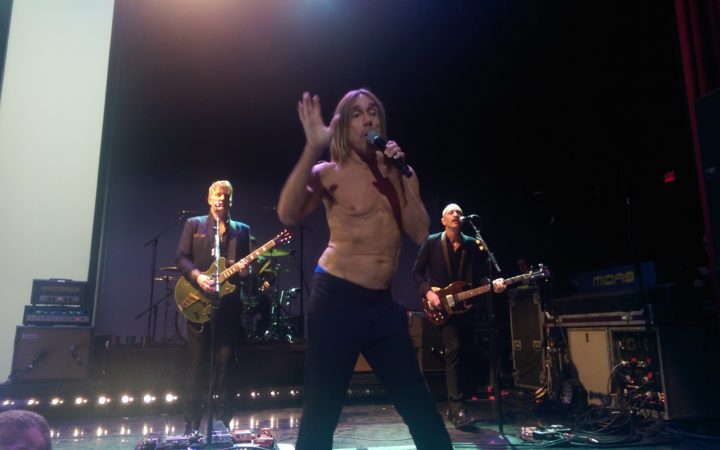
Officially a collaboration with Homme, the Post Pop Depression lineup also includes Troy Van Leeuwen and Dean Fertita, both also of Queens of the Stone Age, Matt Helders of Arctic Monkeys, and legendary guitarist Matt Sweeney of Chavez (not to mention the short-lived Zwan).
The amount of experience and talent on the stage was nearly staggering, and incredible to watch. The band was fresh from a day off after their April 12 show at the United Palace Theatre in Manhattan, and it was palpable in their performances.
Homme, used to fronting bands, got a chance to hang back and really enjoy himself, relying heavily on his gorgeous MotorAve BelAir. Homme grooved, sauntered, strutted, and even waltzed around the stage, interacting with the rest of the band.
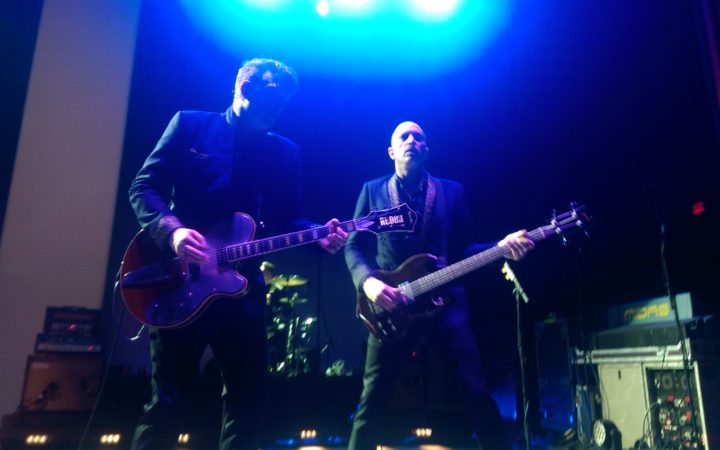
He stepped forward multiple times throughout the night to highlight his solos, blues heavy (the solos in “Nightclubbing” knocked my socks off) as often as they were more reminiscent of his signature desert rock style.
Though more often behind a guitar, Sweeney handled the majority of bass duties (there was a good amount of instrument shuffling going on) with aplomb. Helders was a machine at the kit set up on a riser at stage right, and got to shine with a few impromptu fills. Van Leeuwen and Fertita steadily cycled guitar, keys, and the occasional bass between them, not to mention tambourines, shakers, and even a steel drum.
Iggy Pop himself is like a force of nature. Scratch that — he’s not like a force of nature, he is a force of nature.
He’s no longer young, and the years of theatrical self-abuse he’s put himself through show in his body.
An accident in his early teens left his left leg shorter than his right, which led to a limp. The limp has led to a degradation of the cartilage in this right hip. A fall off of the top of an amp left his spine twisted. His pacing and dancing around the stage was voracious and nonstop, but also clearly took effort. He kept a stool upstage for between-song rests and wasn’t too proud to sit on the downstage monitors when he had to.
Despite all this, however, it was clear to everyone that there was nowhere Iggy Pop would rather have been at that night than on that stage. From the moment the curtain opened until the house lights went up, Pop was nothing but energy.
Pure, gracious, humble, almost boyishly cheerful energy. He danced like a man possessed, crowd-surfed, roamed the GA floor, playfully ribbed some folks up on the balcony who hadn’t gotten up out of their seats, gleefully orchestrated a sing-along to “The Passenger”.
Put simply, Iggy Pop fronted one of the most absorbing, energetic, and interactive shows I’ve ever been to.
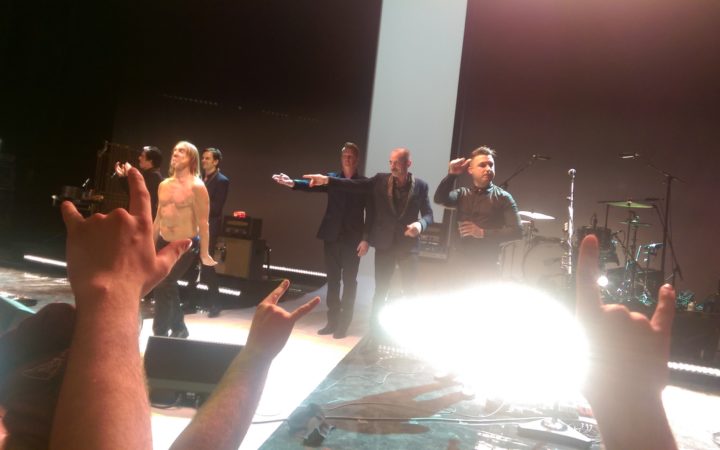
A Fitting End, if an End it is To Be
Just as I was at a loss of words on how to start writing about Iggy Pop’s Post Pop Depression Tour show at the Capitol Theatre, I find myself at a loss for words on how to conclude.
My Metro North ride back into Manhattan was no help — normally profitable writing time, I sat on the train listlessly, lost in a semi-stunned, rock fueled haze.
I did my best here to describe what it was like to be there, watching such a special and incredible performance. But I’m sure its insufficient — not to mention long-winded. So I’ll leave you with the same words I’ve been telling my friends and acquaintances when they ask me how the Iggy Pop show was:
It was a hell of a thing.



